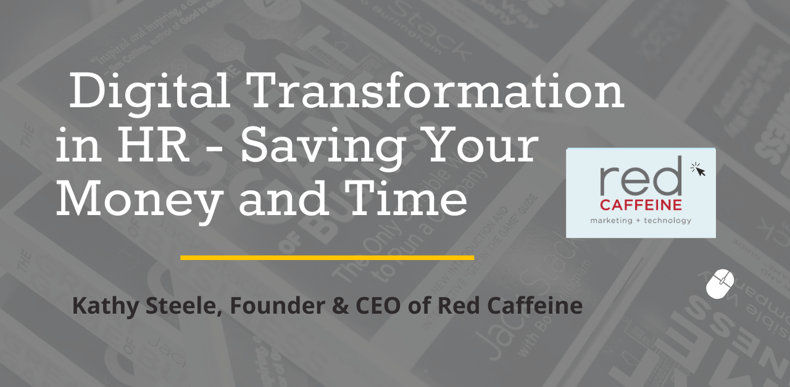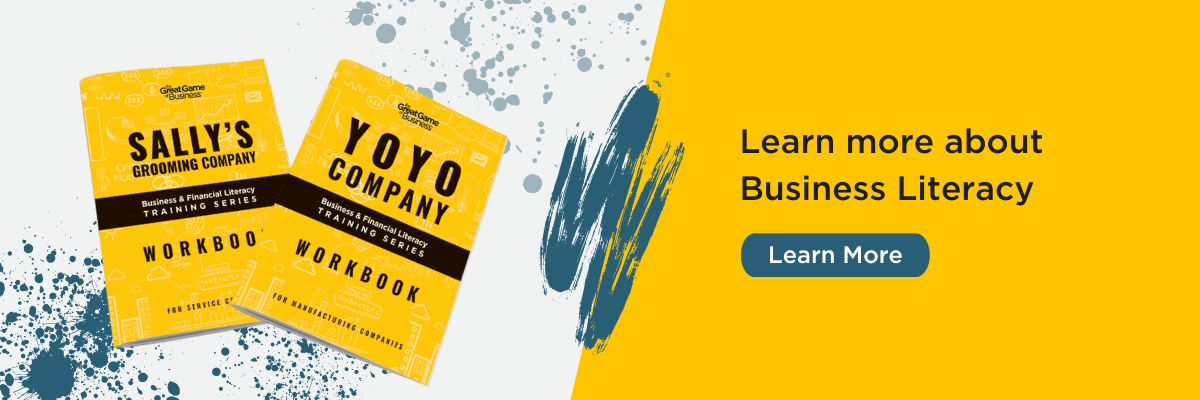
Attracting and retaining talent is expensive. Period. As a Great Game player, you get it - every dollar counts. You also understand that The Great Game of Business is about money and people. So, how about using technology to save you and your team valuable time, and reduce costs in Human Resources?
With it taking an average of 40 days and over $4,000 to make a hire and an average cost of $30,000 for losing a good hire, securing qualified talent in a competitive market is no doubt pricey. Investing in digital tools is a great chance to reduce these costs and save time when attracting and retaining talent.
So, what is Digital Transformation?
Digital transformation can feel like an abstract and lofty buzzword, but it has become an increasingly critical business strategy to fuel sustainable growth. Digital transformation harnesses technology to automate processes that used to be manual to improve effectiveness and productivity. This in turn allows your organization to be more profitable and poised for long-term success.
Investing in digital transformation for your sales department may be more commonplace where tools like CRMs (Client Relationship Managers), email and prospecting platforms, and other digital sales enablement tools are critical to stay competitive. 79% of sales teams use or plan to use tech to reduce business inefficiencies, according to Salesforce.com. This is paying off. Companies that effectively invest in and use these digital and analytical tools typically see five to ten percent revenue growth within a few months.
But what does digital transformation look like in your HR department? While the data for ROI on HR may not be (yet) be as clearly measurable, digital transformation in HR is the next frontier and forward-thinking companies are taking action. According to Deloitte Insights, 56% of companies are redesigning their HR programs to leverage digital and mobile tools.
All-encompassing HR software
HR tech solutions have grown increasingly comprehensive, with opportunities to fully automate the employee experience. Imagine adding technological solutions to recruitment and employee recognition, and automating daily, time-consuming activities by using Artificial Intelligence (AI).
Software that uses AI or other technological solutions to automate operational HR tasks can shave time off the daily workload in your HR department. All-in-one platforms like BambooHR digitize and automate processes by offering software for applicant/candidate tracking, employee self-onboarding, time-off management, an employee database, and performance management. Talk about multi-tasking! This provides big savings on opportunity costs for your HR personnel and reduces mistakes made by manual entry. According to a Deloitte report, AI tools alone are expected to create 3 trillion dollars in total business value by 2021. Especially if you operate with a lean team, tools like this can save hours of work and let your team invest their time in tasks that will generate greater business value.
Market-driven Compensation Data
Top talent is searching the web for salary information to determine their worth and what they can make in a certain position. Use technology to ensure prospects and your current team that compensation is competitive and based on accurate market data, as opposed to reviews on Glassdoor and similar sites where data is not employer-verified and may be influenced by irrelevant factors. Technologies, like PayScale and Payfactors, provides access to data-driven insights on employee compensation based on day-to-day tasks and time in the workforce. This ensures you understand competitive compensation ranges for your market and that new employees are paid based on verified industry benchmark data.
Payscale’s 2018 Compensation Best Practice Report shows a 22% gap exists between employee's and employer's beliefs surrounding whether employees are paid fairly. Having access to data-backed insight and sharing it can help close this gap, getting your whole team on the same page in terms of fair compensation practices. This transparency is fundamental to the open communication and culture that keep employees around long-term.
.png?width=1000&name=22%20(2).png)
Compensation transparency has cost-benefits for the recruitment process, as well - visible compensation upfront weeds out mismatches at the start, avoiding lost time and recruitment efforts on a candidate that was not a good fit.
Measuring Employee Satisfaction
Utilizing survey technology to measure employee satisfaction can give you a pulse check on your employee’s day-to-day experience. This use of tech has become increasingly popular with 84% of respondents to Deloitte’s Global Human Capital Trends survey believing people analytics are important or very important. These tools improve employee retention by identifying possible pain points or potential areas for improvement in the employee experience. There are numerous software options out there that allow you to craft surveys to gauge employee engagement, satisfaction, and general attitudes. A few popular options are Glint and Emplify.
Tip - focus on quality over quantity when designing your survey. Make sure you’re asking the right questions and don’t overwhelm your team with too many. You want to know how your employees are feeling in their current role and what their opinions are about the company as an employer.
It doesn’t end with the survey - make sure you can react and adapt to the data and adjust your employee experience as needed. A Future Workplace and Beyond study found that 83% of HR leaders see a direct connection between employee experience and high performance in the workplace. HR technology can help ensure you are delivering an industry-leading experience for your team, so they can do their best work.

That’s a lot of options!
And we’ve only skimmed the surface of opportunities for digital transformation in your recruitment and retainment strategies. This should give your team a great overview of available digital opportunities to lower costs in HR and boost employee performance. From automation to measurement, these tools can produce measurable ROI and keep your high-performing organization ahead of the curve. Remember, change doesn’t happen overnight. Keep an eye on your operational costs at your Huddle and see how digital transformation can help your business thrive.
.png)


.png?width=720&name=make%20a%20hire%20(4).png)






.png)




-5.png)

